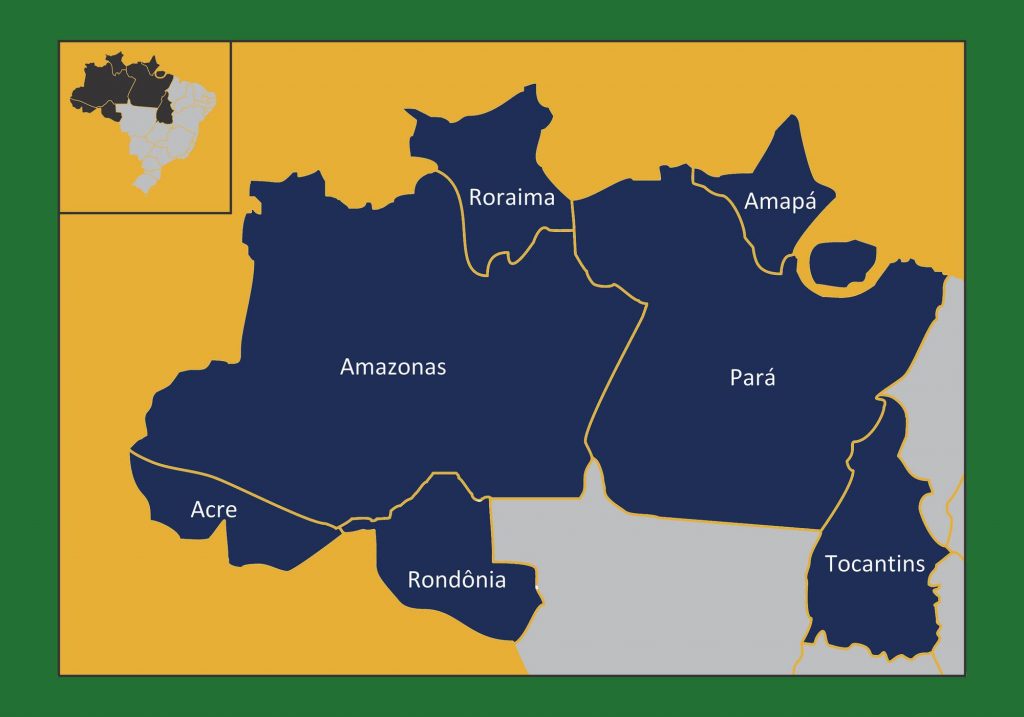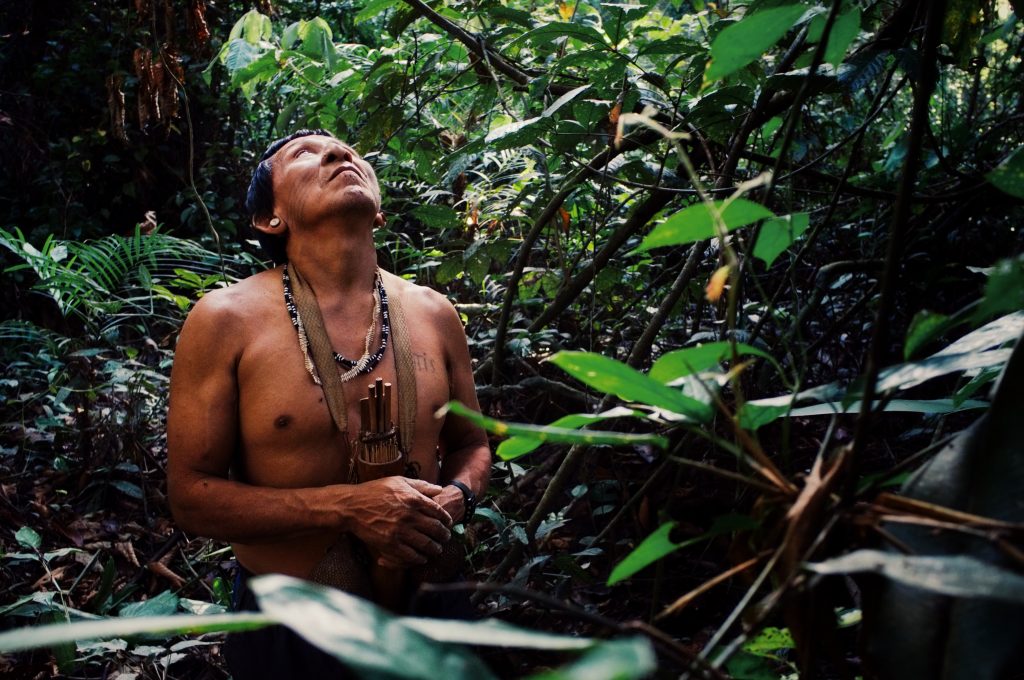Brazil’s indigenous population and COVID-19
by Sophie M. Basta
900,000 persons at risk, and more
On September 12, the AP reported “Brazil indigenous group celebrates 6 months without Covid-19”: the Tembé (Tenetehara) (State of Pará) had successfully remained in isolation since March, only allowing emergency exceptions in and out. They are a rare example. Elsewhere, the virus infiltrated and caused tragedies in populations already suffering many threats.
The indigenous population of Brazil comprises around 300 peoples, nearly 900,000 persons in 2010 – see ISA and IWIGA. As in other countries, they are particularly hard-hit by the pandemic. Indeed, the UNHCR underlined on June 20 that it is disproportionately affecting indigenous peoples, their health and their rights. The official national numbers of COVID-19 cases and casualties in Brazil are reported by the Ministry of Health. Data on indigenous populations are gathered by its Special Secretariat for Indigenous Health (SESAI) from 34 Indigenous Special Sanitary Districts (DSEIs). They however only record data from reservations homologated by the National Foundation of the Indian (FUNAI). A very large number of indigenous people living (or working or studying) in urban areas, and those awaiting land demarcation, are not included. The actual numbers are difficult to track, as underlined by the United Nations in a global view. But it is important, because not having accurate numbers can lead to a lack of necessary measures.
The indigenous organization ‘Coalition of Indigenous Organizations of Brazil’ (APIB) is further tracking data via a dedicated website. It presents data from SESAI reviewed and completed by the recently created National Committee for Indigenous Life and Memory (which includes regional organizations such as COIAB). Numbers demonstrate the vulnerability of the indigenous population. A study published on June 19 showed that the infection rate per 100,000 inhabitants among indigenous people was 84% higher than that of the country as a whole and the death rate 150% higher than the country average. The Northern Region, which encompasses all 7 states of the Amazon region (Amazônia Legal), has been very harshly hit by the virus (see also COIAB plan in July). This holds in particular for the state of Amazonas, which has the largest number of indigenous communities. This vulnerability already raised concerns early on in the pandemic. These concerns have been increasingly expressed in the international press after the first deaths were reported (see for example also by Bloomberg or Business Insider).

A new threat to old problems
Causes of the vulnerability of indigenous populations are historical. For five centuries they have suffered many epidemics (measles, smallpox, tuberculosis, various strains of flu, etc.) coming from non-indigenous persons. A very important number of indigenous populations was decimated. Today many recall and recount these collective traumas (see for example short texts by indigenous students). The traumas resonated as the pandemic hit. Direly famous is the painful history the Yanomami have had with epidemics, ever since their first contact with the exterior in the 1940s.
A major element for the vulnerability of indigenous populations is the ongoing precariousness of their situation. The Brazilian Health System is badly adapted to their needs and the resources dedicated to them are limited. Indeed ISA (Instituto Socioambiental) underlines that “the health policy for indigenous people is one of the most sensitive and problematic issue in the official indigenist policy”. It remains an ongoing fight for indigenous rights, and lives.
A key problem is that SESAI does not have specific approaches to attend indigenous peoples. The COVID-19 pandemic is in fact “a new threat to old problems“. They are “under-served” with regards to aspects of health care while more preys to health problems. Communities often live very far from hospitals with relevant infrastructure and facilities. People in remote villages are facing important difficulties, notably for access to basic sanitation and healthcare, also because of limited transportation and obstacles to communication such as poor internet. Their social and economic conditions are worse than those of the non-indigenous. There is often a lack of basic facilities such as running water, reliable electricity and food supply. “Uncontacted” communities suffer from malnutrition, due to the increasing scarcity of their livelihoods. Precarious conditions further affect people who don’t live in homologated areas, who were not eligible to be attended by SESAI at the beginning of the pandemic. All these factors increase the potential of the spread of diseases.
The failures of government, the collapse of public health systems
The first case of COVID-19 in Brazil was recorded in São Paulo on February 26. The first officially recorded case among the indigenous population was in a village remotely linked – some 880 km – to Manaus (state of Amazonas) on April 1. The person infected was a young Kokama woman, who had been in contact with a contaminated SESAI worker. On April 9 in the State of Roraima, Alvanei Xirixana, a 15-year-old Yanomami boy, died after testing positive for COVID-19. The disease was very probably brought by garimperos, illegal miners continually encroaching Yanomami lands.
Most often the virus was brought to indigenous communities by health workers. It also arrived with peoples who had to go to cities for healthcare. CASAIs, local health centers related to DSEIs, have been reported to be COVID spreaders. Manaus, the Amazon capital, saw its public health care system collapse in April-May and its new mass graves made international headlines. Many people also had to travel to retrieve emergency government welfare payment. In the state of Mato Grosso do Sul, also much affected by the virus, the agribusiness was the main factor of its arrival. In the Tumucumaqui reservation (states of Para/Amapa), the military was reported to be responsible. All the while testing was not encouraged and limited.
ISA and APIB, among others, underline that governmental organizations failed to contain the spread and to protect the indigenous population. Rather, they worsened the situation, often by taking only half measures and without consulting with indigenous leaders about the specific situations of these populations. In mid-March, SESAI published a COVID-19 response plan and FUNAI officially prohibited entry to indigenous villages. However, they did not provide the populations with the means to enact this efficiently, instead allowing notable exceptions (as noted by ISA, APIB or The Economist for example), including ignoring the problems of intruders (illegal miners, loggers, land grabbers…). Some communities and organizations (including APIB and ISA) had already denounced it in March.
On May 6, the Inter-American Commission on Human Rights (IACHR or CIDH – Comissão Interamericana de Direitos Humanos) urged States to address the serious risks faced by indigenous peoples and to take urgent measures to protect their right to health. In June, following inadequacies and poor help from the government, a Yanomami association along with the National Council of Human Rights requested precautionary measures from the IACHR, who passed a resolution on July 7. Later that month, Brazil’s president, Jair Bolsonaro, who is known for his anti-indigenous stance, vetoed a government plan to provide them with basic necessities. On August 5, Brazil’s Supreme Court recognized these issues and ruled that the government must adopt measures to shield indigenous peoples from the virus and remove invaders. The order had flaws and the situation went on, further casting international doubt about genocidal intentions. But then early December the Ministry of Health announced indigenous populations will be among the first to receive vaccination against COVID-19, along with health workers and the elderly.

Image Laszlo Mates via Shutterstock
Shielding from the virus
One of the first basic steps taken by the communities themselves early on in the pandemic to shield from the virus was isolation. A few like some Yanomami took to the forest, as they have done before when facing threats. “Uncontacted” communities, usually called “isolated peoples”, are utmostly vulnerable, especially with relation to lethality and access to special health care. Fears surfaced that they might encounter infected people, either neighbor “contacted” indigenous persons or intruders. It was however a government health worker who most likely brought the first reported cases of COVID-19 to the Javari Valley reservation (State of Amazonas), where most “isolated peoples” live.
Faced with inaction from the Brazilian Government, since March the majority of indigenous communities decided for isolation against the coronavirus, along with actively passing on information about the disease. Like the Tembé in the north of the country and others in the state of Mato Grosso do Sul, many communities erected physical barriers. Some called for aid, such as food baskets, to fence off the pandemic. Many indigenous organizations and individuals (such as Ailton Krenak) took to social media, the internet and networks, speaking about the indigenous situation during the pandemic. They remained in isolation and launched fundraising campaigns (for example Yanomami’s “Miners out, COVID out”). The Tembé managed to remain safe for quite some time, as did until recently, the Kuikuro (State of Mato Grosso). Most, however did not.
Many indigenous elders, important leaders, have died from the virus, including Paulino Paiakan, José Carlos Ferreira Arara, Dionito José de Souza Macuxi, Higino Pimental Tenório, Aritana Yawalapiti, Feliciano Lana, and many more. Raoni Metuktire, renowned leader and activist who rallied international support against deforestation already back in the 1980s with Sting, survived COVID-19, but lost his wife. These elders are not only great leaders but are also often called “living libraries”, as Puyr Tembé also voiced, highlighting other tragedies of the pandemic.
Despite precautions by the indigenous populations themselves, tragic deaths occurred. The numerous Memorial Vagalumes (Fireflies Memorial) testify to this. The pandemic remains a threat. It is essential that indigenous communities are able to remain isolated, with basic necessities. And along with the ongoing pandemic they still have to face many more threats.
Sophie M. Basta is a cultural anthropologist. She worked several years with an indigenous community in the state of Mato Grosso. She currently resides in the UK and is active as a freelance writer in her field.
